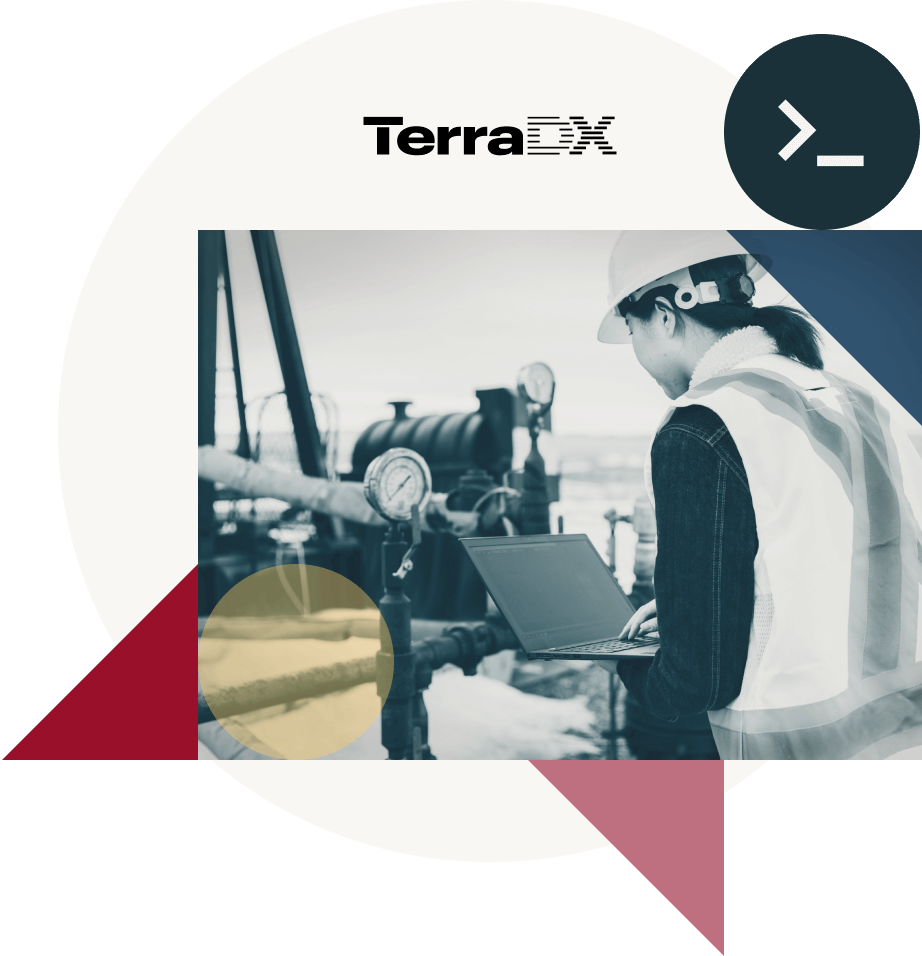Powering the future of geoscientific applications
TerraDX uses Databricks Mosaic AI to enable breakthroughs in mineral exploration
To build and deploy a deep learning
classification model using terabytes of data

Founded in 2023, TerraDX Technologies (formerly Durendal Resources) is focused on applying novel technologies in artificial intelligence (AI) and machine learning (ML) to geoscientific applications like critical minerals and natural hydrogen exploration. Their founders recognized the need to apply advanced research and development techniques to the process of locating mineral deposits. Given the vast amounts of data available and the need for cutting-edge advanced AI and ML tools, TerraDX’s leadership knew that the Databricks Data Intelligence Platform would be uniquely suited to support both efficient data processing at scale and rapid generation of actionable insights. Using Databricks Mosaic AI and MLflow, the TerraDX team built and deployed a deep learning model for the classification of subsurface mineral deposits in less than a month.
Traditional exploration: Between a rock and a hard place
The history of mineral exploration is intertwined with the history of human civilization, as prehistoric humans searched for stones and metals that could be used to fashion tools and other implements. However, the process of discovering new minerals and mines hasn’t evolved at the same pace as the rest of human technology. Traditional exploration relies on detecting and sampling exposed rock formations, which is effective in locations with visible outcrops. But when minerals are hidden beneath soil or weathered rock, discovering new deposits requires expensive and time-consuming drilling and sampling. As Colby Mintram, CEO and Co-founder at TerraDX, explained, “The exploration environment has not changed over the last 200 years. We’ve found all of those outcropping deposits, and what we’re left with is minerals buried underneath soil.”
The TerraDX team, with over 550 years of combined experience in the mining and technology industry, quickly grasped the potential of ML and AI tools to transform the field of critical minerals exploration. Through the analysis of extensive datasets, AI models can detect nuanced patterns that indicate the presence of mineral systems, enhancing forecasting precision and minimizing the necessity for extensive field investigations led by inefficient and manual heuristic processes. Mintram elaborated, “For the past 100 years, people have developed all kinds of models and processes to make the act of exploration easier. However, these models are biased by our limited knowledge of earth systems and how mineral deposits are formed. We threw that all out, and we said, ‘The data is the data, and we’ll see what the data tells us.’ We integrated that ethos into our whole process, and it was very, very successful.”
Mintram emphasized that AI cannot replace geologists. People still need to collect data, and the models developed by TerraDX are designed to feed into and enhance the geologists’ workflow, not replace them. Their goal is to create a diverse suite of models that aid in the various processes of subsurface exploration regardless of the target. These insights can then enhance geological understanding on a highly localized scale. As Mintram put it, “Geologists can move from making experience-based decisions without a quantifiable metric for assigning risk to now using advanced technology to assist them in quantifying the risk and reward of actions such as drill programs, which ultimately are the only way to find a deposit that may then be developed into a mine.”
Mining exploration made easier, faster and cheaper
TerraDX’s initial innovation was the development of HORIZON, a purpose-built deep neural network (DNN) for mineral exploration. Short for High-Resolution Ore Investigation Network, HORIZON can detect the occurrence of subsurface mineral systems through the analysis of vast quantities of geophysical and exploration data from the Geological Survey of New South Wales, Australia, focused on the Central Lachlan Orogen. After training, HORIZON produces maps that classify potential two-dimensional areas with mineral systems in the region, helping to reduce the area of interest by 98% so geologists can focus on the right areas for onsite exploration activities. Through integration with the Databricks Data Intelligence Platform, HORIZON can process data efficiently and quickly and generate practical insights that deliver a tangible financial incentive to the user.
Databricks AI and ML tools were crucial to the development of HORIZON. Stated Mintram, “We picked Databricks because it’s literally an end-to-end platform, and we used everything from data streaming to feature storing, model training, notebooks and MLflow. The collaborative workbooks were amazing and saved us so much time.” Databricks MLflow, a purpose-built platform for iteration and large-scale model deployment, was especially useful to the team. Added Bill Vallier, CTO at TerraDX, “Looking back, we couldn’t have prototyped and gotten HORIZON out as fast as we did without MLflow.”
Unlike traditional mineral exploration, building the HORIZON model on the Databricks Data Intelligence Platform was hassle-free for the TerraDX team. Explained Mintram, “The worst thing as a technology developer is being stuck using a platform where you have to spend months trying to learn it before you even get going with it. As a ‘non-technical’ co-founder, I was actually the first person in our organization to get my hands on the platform and start building. The documentation, tutorials and Solution Accelerators notebooks provided one of the lowest barriers to entry that I’ve seen in this space while retaining all the functionality of legacy and future-facing capabilities.” Vallier added, “Databricks has amazing technical documentation, so we could quickly solve any problems that we ran into.”
The end result: in just four weeks, TerraDX developed an extremely precise model capable of producing mineral system classification maps for the Central Lachlan Orogen that offer valuable insights into promising exploration areas and help direct onsite operations effectively.
Finding more minerals in them thar hills
TerraDX’s ultimate vision is to enable all mining companies to adopt advanced AI and ML tools for their existing operations and future exploration. TerraDX views Databricks as a critical partner in that vision. “Storing your data, having access and having better data intelligence is key for this industry. We think Databricks is the way to do it,” said Mintram. Vallier has big plans for the future: “When we began working with Databricks, I had a feeling this was going to be the all-in-one platform where we’re going to be running everything.” The team is excited to integrate the capabilities of GenAI and leverage the Databricks open source foundation model, DBRX, as they continue their pioneering work in mineral exploration.
To learn more about TerraDX’s work building foundation models that unlock subsurface intelligence in natural resources, visit https://www.terradx.ai/.

